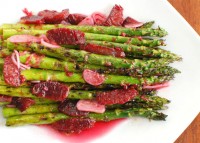
January 7 – 12, 2013
Primo’s Outlook
Lettuce:
Market is much stronger. Quality has been good.
Leaf:
Romaine and leaf markets are much stronger. Overall quality has been very good.
Broccoli:
Market is much stronger. Quality has been very good.
Cauliflower:
Cauliflower market is rebounding and expected to go higher. Quality has been very good.
Carrots:
Georgia has started with new crop. Some reports of quality starting to slip on some Canadian product. We will have new crop towards the end of next week. Cost will be higher.
Celery:
Celery market has remained steady. Quality has been very good.
Strawberries:
Florida berry quality has been good overall. Market has been steady.
Potatoes:
Idaho market has continued on the upward side along with freight cost. Smaller counts are much harder to come by than larger counts.
Onions:
Onion market is on the rise and is expected to continue minimally through this month.
Citrus:
Market is steady on navels and lemons. Quality has been good.
Cucumbers:
Market has remained the same, price is steady and quality is good.
Peppers:
Market has remained steady with very good quality.
Tomatoes:
Tomato market is lower on rounds as shippers move into better supplies. Grapes, cherries, and
romas are steady.
Red grapes will be higher as we move into the offshore deal. California is done for the season.
Much cooler weather in the Arizona desert along with ice in the fields in the mornings is slowing down both the crops and harvest. This weather pattern is contributing to higher costs across the board.
Feature of the Week
This week Primo is featuring Blood Oranges. Blood Oranges are in abundant supply from December through the month of March. Named for their deep pink and red-streaked flesh, Blood Oranges are sweetly flavored. Their skins may have a reddish blush. Smaller than an average orange with slightly rougher skin, Blood Oranges are juicy and best when eaten fresh. Blood Oranges are also popular with chefs for use in cooked sauces.
Look for Blood Oranges that are firm and heavy for their size. They may have a full-colored blush or have no blush at all. Avoid blemishes and shriveled or moldy spots. For the juiciest, sweetest fruit, select Blood Oranges with a sweet, clean fragrance. Store at cool room temperatures for up to one week or refrigerate for up to two weeks.
Recipe of the Week
Grilled Asparagus with Blood Orange Vinaigrette
1 bunch of asparagus (about 1 pound)
2 tsp plus 3 Tbsp extra virgin olive oil
3 blood oranges
1 shallot, sliced thin
1 Tbsp white wine vinegar
salt and pepper
Grill the Asparagus:
Trim the tough ends off the bottom of the asparagus (about 2″). Toss the asparagus in a bowl with the 2 tsp of olive oil. Grill over moderate heat about 3-4 minutes on each side. The asparagus should be slightly charred and tender-crisp when done. Remove from the heat and put on a plate. Season with salt and pepper.
Prep the oranges:
Cut one of the blood oranges in half and squeeze the juice into a small bowl. Using a sharp paring knife, cut the skin and the white pith off the remaining two oranges. Cut in between the membranes of each segment to remove them from the orange. Do this over the bowl with the juice to capture any excess juice. After removing the segments squeeze what’s left of the orange to get all the juice out.
Make the vinaigrette:
In another bowl, whisk together the shallots, wine vinegar and olive oil. Season with salt and pepper. Gently stir in the blood orange juice and segments. Spoon the vinaigrette over the grilled asparagus. This dish can be served warm, or at room temperature.
Fun Facts of the Week
The color of blood oranges is due to the pigment anthocyanin, not usually found in citrus fruit but common in other red fruits such as cherries and strawberries.


